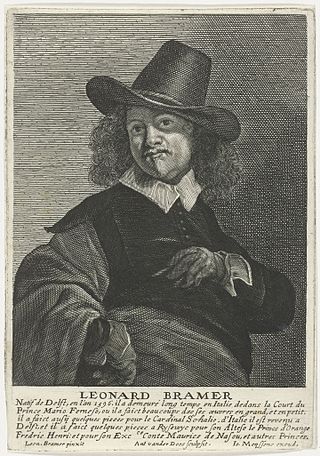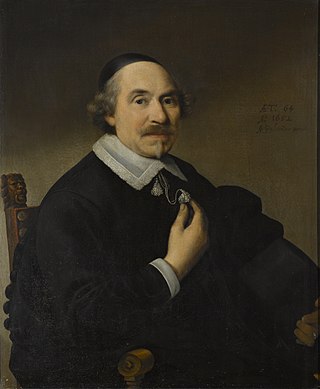
Chris Dagradi (born August 21, 1954 in New York) is an American artist, who lives and works in the Netherlands since 1978. He works as painter, sculptor and ceramist. [1]

Chris Dagradi (born August 21, 1954 in New York) is an American artist, who lives and works in the Netherlands since 1978. He works as painter, sculptor and ceramist. [1]
Dagradi studied at the Cooper Union in New York City from 1974 to 1977, at the Willem de Kooning Academy in Rotterdam and at Ateliers '63 in Haarlem. [2]
Originally Dagradi worked in abstract expressionist style. His paintings contain strong lines and colors, the layering and depth noticeable. In the 1990s, he settled in Delft, where he found an ancient shard of pottery. Ever since, he is fascinated by the Delftware and the possibilities offered by the painting of tiles and ceramics, and makes plates, tile panels, mosaic, and tiles with relief. He got experience with this technique through his work as a painter at the Delft Pauw and as a production assistant at Royal Delft.
Dagradi exhibited among other in the Museum Het Prinsenhof in Delft [3] [4] and the Dutch Tile Museum in Otterlo. For the Delft district Wippolder Dagradi made a tableau with the map of the district.

Delft is a city and municipality in the province of South Holland, Netherlands. It is located between Rotterdam, to the southeast, and The Hague, to the northwest. Together with them, it is part of both the Rotterdam–The Hague metropolitan area and the Randstad.

Maarten van Heemskerck or Marten Jacobsz Heemskerk van Veen was a Dutch portrait and religious painter, who spent most of his career in Haarlem. He was a pupil of Jan van Scorel, and adopted his teacher's Italian-influenced style. He spent the years 1532–6 in Italy. He produced many designs for engravers, and is especially known for his depictions of the Wonders of the World.

The Frans Hals Museum is a museum located in Haarlem, the Netherlands.

The Milkmaid, sometimes called The Kitchen Maid, is an oil-on-canvas painting of a "milkmaid", in fact, a domestic kitchen maid, by the Dutch artist Johannes Vermeer. It is now in the Rijksmuseum in Amsterdam, the Netherlands, which regards it as "unquestionably one of the museum's finest attractions".

The Prinsenhof in the city of Delft in the Netherlands is an urban palace built in the Middle Ages as a monastery. Later it served as a residence for William the Silent. William was assassinated in the Prinsenhof by Balthasar Gérard in 1584 - the holes in the wall made by the bullets at the main stairs are still visible.

Leonaert Bramer, also Leendert or Leonard, was a Dutch painter known primarily for genre, religious, and history paintings. Very prolific as a painter and draftsman, he is noted especially for nocturnal scenes which show a penchant for exotic details of costume and setting. He also painted frescos—a rarity north of the Alps—which have not survived, as well as murals on canvas, few of which are extant. Bramer is one of the most intriguing personalities in seventeenth-century Dutch art.

Pieter Anthonisz van Bronckhorst or Bronkhorst, was a Dutch painter active in Delft. He was mainly an architectural painter known for his church interiors and fantasy palaces with small figures representing biblical stories. It is possible he also painted still lifes and was a staffage painter for other painters.
Lukas Smits is a Dutch painter.

Maria Overlander van Purmerland was a noble from the Dutch Golden Age and Free Lady of Purmerland and Ilpendam. She was married to Frans Banninck Cocq captain of Rembrandts painting The Night Watch.

Jan Willem Eduard Buijs, sometimes written Jan Buys was a Dutch architect, best known for his De Volharding Building. His works include manufacturing, commercial, residential and municipal buildings. Stylistically, they usually combine New Objectivist and De Stijl features, and in his interiors, a Bauhaus approach.
Kirsten Geisler is a German New media artist.
Ans Wortel was a Dutch painter, poet and writer. She made gouaches and oil paintings, aquarelles, drawings, collages, lithographs, etchings, sculptures and glass sculptures. She was an autodidact and won the first prize at the biennale of Paris in 1963. She was one of the leading female artists of postwar Dutch modern art. There are some 50 books with contributions from or about Wortel.

Pieter Biesboer, is a Dutch art historian and prolific writer on 17th-century Dutch art. His specialty is art from Haarlem.

Pieter Abramsen was a Dutch sculptor, and visiting professor at the Delft University of Technology, known for his work in which abstraction and realism are joined.

Berend Strik is a Dutch visual artist working and living in Amsterdam.
Theodorus Antonius Hubertus Maria (Theo) Dobbelman was a Dutch sculptor, ceramist and painter.
Petrus Cornelis Constant (Piet) Wiegman was a Dutch painter, graphic artist, sculptor, ceramist and puppeteer.

Pepijn van den Nieuwendijk is a Dutch painter and ceramist.
Jeroen Eisinga is a contemporary video artist from the Netherlands. His work is characterised by its performance like character and its plots where an ordeal is often central. Simplicity is of key importance to Eisinga. His work is shot on film and is shot on 16mm as well as on 35mm format film.

Passing Mother's Grave or Langs Moeders Graf also known as Passing the Churchyard is an oil painting on canvas made in 1856 by the Dutch Realist artist and a representative of the Hague School of painters Jozef Israëls. The subject of the painting is a widowed fisherman walking past his deceased wife's grave with his two children.